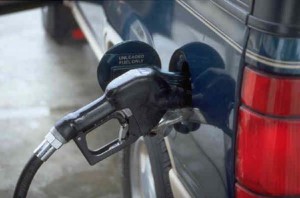It’s a long way from Libya to Los Angeles, but the violence that is tearing apart the Northern African nation is already being felt halfway around the world. There are the humanitarian implications, of course, considering the mounting death toll and the threat of civil war as Libyan President Muammar el Qadaffi desperately clings to power – but there’s a practical side that is rapidly impacting those who have ignored the latest headlines.
And that will likely be apparent on your next visit to the gas pump. Oil prices are soaring. The benchmark Brent Crude surged to $105.45 a barrel during Monday trading. West Texas Intermediate was “only” at $91.42, but that was still a one-day, $5.22 jump.
“We are watching this very closely,” BP Chief Executive Bob Dudley said from London, as petroleum futures surged to the highest levels seen since prices started retreating after hitting record levels in mid-2008.
How far up things might go is unclear, but “The oil market could easily jump another $10 in the short term if the violence continues,” David Cohen, director of Asian Economic Forecasting at Asian Economics, warned.
The impact on pricing is only part of the problem. Libya is the first OPEC member state to be struck by the wave of populist uprisings that has spread through the Mideast. It is also one of the biggest petro-exporters, with the single largest oil reserves in all of Africa.
With much of the country in turmoil, and militias opening fire on anyone moving in the capital of Tripoli, experts predict that there could be disruptions in production and delays in oil shipments.
That is quickly being factored in as everyone from oil producers down to local service stations start setting prices – which are already up about 20% across most of the U.S. when compared with what a gallon of regular unleaded went for a year ago.
Nationally, AAA reports the average pump price is $3.17 a gallon, though some markets are already nudging $3.50, and the Oil Price Information Service predicts the national average could be $3.75 by Memorial Day.
And that might not be the limit. Industry officials, including a former Shell Oil chairman, have forecast that $4 and even $5 a gallon could be coming — even without the push of political revolt in the Mideast/
“Oil is being bought on the risk that this contagion will spread through the Middle East,” Jonathan Barratt, managing director of Commodity Broking Services, in Sydney, told the Bloomberg News Service.
There may actually be a bigger worry, however. Economists warn that even without a wholesale disruption in petroleum supplies, a big run-up in fuel costs could put a strain on an economy just beginning to revive, threatening to send the country back into recession if the spike were big enough and last for more than a short time.

